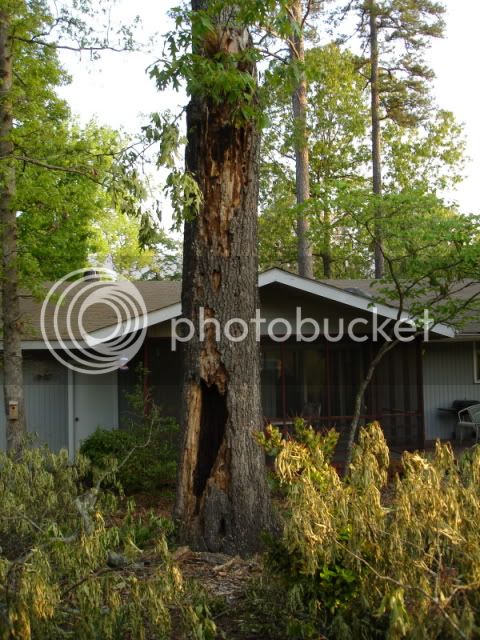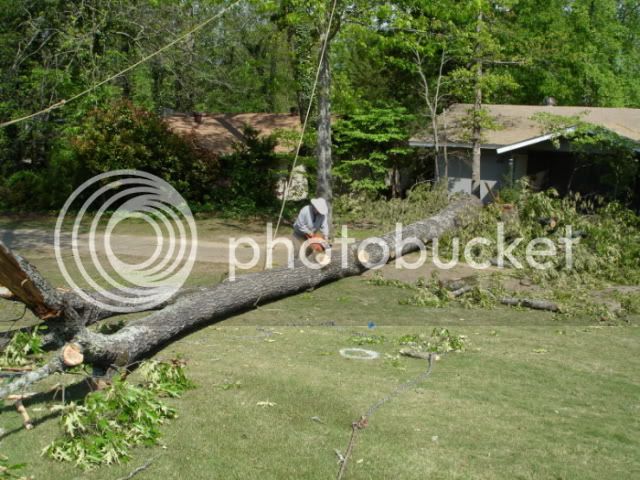I believe it is an oak, approx. 24" DBH.
Leans very hard in the direction I want to drop it, with a healed wound on the tension side, that looks like it could have been a buck rub when it was small, that goes about 6' up from the base, and leaks water.
There is a gigantic defect that starts just above the first limb and is on the tension side, directly opposite the lean. Probably lost a large limb a long time ago. It is rotten inside the defect and sounds hollow when you tap on the rotten part. Otherwise it is alive and the canopy looks healthy.
The pictures show a small ladder (used to take pics of the defect ) that is standing just about plumb, to give a reference as to the extent of lean. I believe it is unmoved for all the pics.
If it falls in the direction of lean, it may damage a maple and another oak that I would prefer not to mess up.
If I cut it at the defect, it could save alot of damage to the other trees.
I would have to make those cuts from a ladder.
This is not my first day with a chainsaw, and I have fallen much bigger trees than this, but none with the compound problems that this has.
I did search the forums first for "leaners" and have some ideas, but each tree is different, and hopefully my pics are good enough to get some advice.
Leans very hard in the direction I want to drop it, with a healed wound on the tension side, that looks like it could have been a buck rub when it was small, that goes about 6' up from the base, and leaks water.
There is a gigantic defect that starts just above the first limb and is on the tension side, directly opposite the lean. Probably lost a large limb a long time ago. It is rotten inside the defect and sounds hollow when you tap on the rotten part. Otherwise it is alive and the canopy looks healthy.
The pictures show a small ladder (used to take pics of the defect ) that is standing just about plumb, to give a reference as to the extent of lean. I believe it is unmoved for all the pics.
If it falls in the direction of lean, it may damage a maple and another oak that I would prefer not to mess up.
If I cut it at the defect, it could save alot of damage to the other trees.
I would have to make those cuts from a ladder.
This is not my first day with a chainsaw, and I have fallen much bigger trees than this, but none with the compound problems that this has.
I did search the forums first for "leaners" and have some ideas, but each tree is different, and hopefully my pics are good enough to get some advice.








